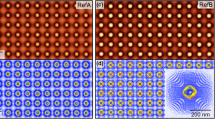Abstract
Quantum dots (QDs) have a potential for application in semiconductor optical amplifiers (SOAs), due to their high saturation power related to the low differential gain, fast gain recovery and wide gain spectrum compared to quantum wells. Besides all advantages, QDs realized by Stranski-Krastanov growth mode have a flat shape which leads to a gain anisotropy and a related transverse magnetic (TM) and -electric (TE) polarization dependence as compared to bulk material. This has so far prevented their applications in SOAs. It has been suggested that control of optical polarization anisotropy of the QD can be obtained through QD shape engineering, in closely stacked or columnar QDs (CQDs). To this aim, we have fabricated and tested SOA structures based on closely-stacked and columnar QDs. Closely-stacked InAs QDs with 4, 6 and 10 nm GaAs spacer showed a minor improvement in the ratio of TM and TE integrated electroluminescence (EL) over standard QDs along with a strong reduction in efficiency. In contrast, a large improvement was obtained in CQDs, depending on the number of stacked submonolayers which can be attributed to the more symmetric shape of columnar QDs. A relatively small spectral separation (ΔE ~ 21 meV) between TE- and TM-EL peaks has been observed showing that heavy- and light hole-like states, respectively are energetically close in these QDs. These results indicate that columnar QDs have a significant potential for polarization-independent QD SOA.
Similar content being viewed by others
References
Akiyama, T. et al.: An ultrawide-band semiconductor optical amplifier having an extremely high penalty-free output power of 23 dBm achieved with quantum dots. IEEE Photon. Tech. Lett. 17, 1614–1616 (2005)
Anantathanasarn, S. et al.: Stacking and polarization control of wavelength-tunable (1.55 μm region) InAs/InGaAsP/InP (100) quantum dots. Appl. Phys. Lett. 88, (2006)
Berg, T.W. et al.: Quantum dot amplifiers with high output power and low noise. Appl. Phys. Lett. 82, 3083–3085 (2003)
Fafard, S. et al.: Lasing in quantum-dot ensembles with sharp adjustable electronic shells. Appl. Phys. Lett. 75, 986–988 (1999)
Jayavel, P. et al.: Optical polarization properties of InAs/GaAs quantum dot semiconductor optical amplifier. Jpn. J. Appl. Phys. 44, 2528–2530 (2005)
Kawaguchi, K. et al.: Controlling polarization of 1.55μm columnar InAs quantum dots with highly tensile-strained InGaAsP barriers on InP(001). Jpn. J. Appl. Phys. 45, L1244–L1246 (2006)
Kita, T. et al.: Polarization-independent photoluminescence from columnar InAs/GaAs self-assembled quantum dots. Jpn. J. Appl. Phys. 41, L1143–L1145 (2002)
Kita, T. et al.: Polarization controlled edge emission from columnar InAs/GaAs self-assembled quantum dots. Phys. Stat. Sol. (c) 0, 1137–1140 (2003)
Kita, T. et al.: Artificial control of optical gain polarization by stacking quantum dot layers. App. Phys. Lett. 88, (2006)
Motyka, M. et al.: Optical and electronic properties of GaAs-based structures with columnar quantum dots. Appl. Phys. Lett. 90, (2007)
Mukai, K. et al.: Lasing with low threshold current and high output power from columnar-shaped InAs/GaAs quantum dots. Electron. Lett. 34, 1588–1589 (1998)
Sugawara, M. et al.: Quantum-dot semiconductor optical amplifiers for high bit-rate signal processing over 40 Gbit/s. Jpn. J. Appl. Phys. 40, L488–L491 (2001)
Yu, P. et al.: Optical anisotropy in vertically coupled quantum dots. Phys. Rev. B 60, 16680–16685 (1999)
Author information
Authors and Affiliations
Corresponding author
Rights and permissions
About this article
Cite this article
Ridha, P., Li, L., Rossetti, M. et al. Polarization dependence of electroluminescence from closely-stacked and columnar quantum dots. Opt Quant Electron 40, 239–248 (2008). https://doi.org/10.1007/s11082-007-9173-6
Received:
Accepted:
Published:
Issue Date:
DOI: https://doi.org/10.1007/s11082-007-9173-6




